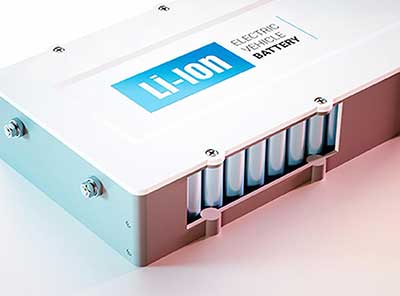Relevance: GS-1: Distribution of key natural resources across the world.
Relevance: GS-2: Government policies and interventions for development in various sectors.
Key Phrases: EV manufacture, India automotive industry, rare minerals, lithium, cobalt, and nickel, IEA’s Sustainable Development Scenario, Supply Chains, Ministry of Mines.
Why in News?
- EV manufacture entails use of various scarce minerals. Securing their supply through deals with resource rich nations is vital.
Context:
- India automotive industry is experiencing a paradigm shift as it tries to switch to alternative and less energy demanding options like electric vehicles (EV). The transition from petrol to EV is a significant step in the move to a net-zero future, but at the same time it also impacts India’s import dependency.
- EVs, like various low carbon technologies, use several exotic metals in their design. Many of these metals are considered critical in the sense that they are required for effective functioning of the EVs. While the government has set a high target for EV sales, India is not endowed with many of the rare minerals such as lithium, cobalt, and nickel, which are used to make lithium-ion (Li-ion) battery cells, which then is utilised to generate electric car batteries.
World Scenario
- In 2020, Australia was responsible for 49 per cent of global lithium production, while 65 per cent of graphite is produced in China, 68 per cent of cobalt in Congo, and 33 per cent of Nickel in Indonesia. Apart from graphite and nickel where India has 3 per cent and 5.32 per cent share globally and is amongst the top five, in rest there is a huge deficiency.

How these minerals are important for EVs?
- According to the IEA’s Sustainable Development Scenario, the demand for graphite, nickel, copper, cobalt and manganese is expected to see phenomenal growth, with lithium being the most sought after. The anode in Li-ion batteries requires graphite and, apparently, there are no substitutes for it. The cathodes, which also require Li-on, contains nickel and delivers high energy density, allowing the vehicle to travel further.
- Cobalt is important for EV as it prevents the cathode from overheating while extending the life of batteries. Manganese, on the other hand, contributes 61 per cent of the cathode needs of the batteries.
- International Energy Agency mentions that the amount of minerals an electric car would require would be at least six times more than a conventional petrol and diesel vehicle. This in essence would increase the demand for specific commodities required for EVs.
Critical minerals
- Critical minerals are metals and non-metals that are considered vital for the economic well-being of the world's major and emerging economies, yet whose supply may be at risk due to geological scarcity, geopolitical issues, trade policy or other factors. There is no universal classification of critical materials.
- Some examples of critical mineral includes: Rare-earth elements (REE), lithium, cobalt, tungsten, platinum, magnesium, molybdenum, antimony, vanadium, nickel, chromium, manganese etc.
- Critical minerals are used to manufacture advanced technologies including mobile phones, computers, fibre-optic cables, semi-conductors, banknotes, and defence, aerospace and medical applications. Many are used in low-emission technologies such as electric vehicles, wind turbines, solar panels, and rechargeable batteries.
Steps to Have Undisrupted Critical Mineral Supply Chains:
- Firstly, some of the state-run companies can form a joint venture to secure mineral assets which would be of demand for mass adoption of EVs by 2030. The learnings of International Coal Ventures Ltd may be looked into while forming such strategic joint ventures. Multiple Japanese companies are engaging with firms in Australia and Kazakhstan to develop mining projects, in order to reduce dependence on China.
- Secondly, Indian exploring companies may look at opportunities for international collaborations in this space. The partnership could also be in the areas of joint exploration, and refining, and trading of critical minerals. In December 2018, Geoscience Australia and the US Geological Survey agreed to collaborate and work together on critical minerals issues.
- Thirdly, a dedicated cell could be created by the government of India towards regular monitoring of availability of rare earths and other critical minerals under the Ministry of Mines. In this context, it is observed that countries like Japan have earmarked a $1.5-billion fund for developing alternative sources of rare earths, notching up the push for joint venture partnerships.
- Fourth, a few years back the Australian and the US mineral agencies signed a deal to jointly develop a better understanding of their critical minerals’ reserves and in the process explore their existence in other parts. India may like to have bilateral engagements under new platforms like QUAD to secure its needs in the years to come.
- Lastly, India could explore the possibility of formation of an intergovernmental body amongst the Developing South, something akin to OPEC of 1960. This could include Chile, Argentina, Brazil, Cuba in Latin America; Congo, Gabon, Madagascar, Mozambique, and South Africa in Africa; Indonesia, the Philippines, and Russia, apart from India.
Way Forward:
- In the process of reducing its import reliance on crude, India may find itself dependent on other minerals jeopardising its EV ambition. If India wants to shift to EV, it is but imperative to secure its mineral resources which would be quintessential for its growth.
Source: The Hindu BL
Mains Question:
Q. What do you understand by Critical Mineral? What should be the measures to ensure undisrupted supply chains of Critical Mineral? Explain.








